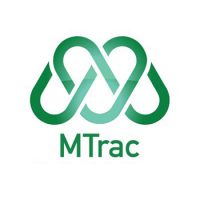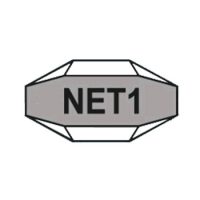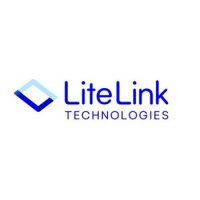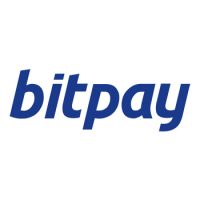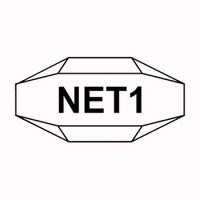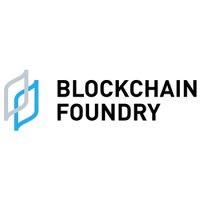Blockchain Press Releases
Automated Guided Vehicle Market to Reach $9.18 Billion by 2030: Grand View Research, Inc.
SAN FRANCISCO, July 5, 2023 /PRNewswire/ — The global automated guided vehicle market size is anticipated to reach USD 9.18 billion by 2030, registering a CAGR of 9.7% from 2023 to 2030, according to a new report by Grand View Research, Inc. Automated guided vehicles (AGVs) have transformed the way materials can be moved within the manufacturing and distribution facilities. In a production environment where several operations are carried out simultaneously, these vehicles ensure a predictable and reliable transfer of raw materials and manufactured products from one point to another within the facility, thereby eliminating any potential disruption in production.
Key Industry Insights & Findings from the report:
- The unit load carrier segment is expected to expand at the fastest CAGR over the forecast period owing to its ability to handle multiple items simultaneously, reducing the number of trips required and, potentially, handling costs.
- Natural navigation technology’s adoption is expected to grow significantly over the forecast period as it enables businesses to easily modify and expand the guide path of the AGV.
- Assembly line application is expected to have the highest CAGR over the forecasts period as assembly line AGV are replacing traditional mechanical production lines.
- The manufacturing segment dominated the market in 2022 and accounted for a revenue share of over 77%. The growing adoption of automated guided vehicles across various industries can be attributed to the benefits offered by AGVs in terms of productivity, safety, and accuracy.
- The service segment is anticipated to be the fastest-growing segment in the forecast period. This growth can be attributed to the rising demand for various services, which include preventive and corrective maintenance, vehicle and software health check, and training employees directly or indirectly with the operation of AGVs.
- Europe dominated the market in 2022 and accounted for a revenue share of over 30%. Rising investments in the manufacturing sector’s technological advancement are expected to improve the AGV market in Europe.
Read 213-page market research report, “Automated Guided Vehicle Market Size, Share & Trends Analysis Report By Vehicle Type, By Navigation Technology, By Application, By End-Use Industry, By Component, By Battery Type, By Region, And Segment Forecasts, 2023 – 2030“, published by Grand View Research.
Automated Guided Vehicle Market Growth & Trends
These vehicles can operate safely around structures, machinery, and employees, as they are equipped with accessories, such as camera vision and LiDAR sensors, which help detect junctions, identify floor signs, and avoid collisions with any obstacle. For instance, in November 2021, Quanergy Systems, Inc., a U.S.-based company that offers an AI-powered LiDAR platform, launched the new M1 Edge 2D LiDAR sensors for automation. The newly launched LiDAR sensor is light in weight, broad 360°, with a sensing capability of up to 200 meters used in mobile robotics, AGVs, warehouse logistics applications, and port automation.
Several manufacturing plants and warehouses deploy material handling equipment for various activities, such as locating stock, picking orders, and moving products and raw materials. Transportation and logistics firms are mainly focusing on deploying such equipment to boost the efficiency of their operations in line with the growing demand for their services. For instance, in March 2023, MasterMover Ltd, a prominent manufacturer of electric tug and tow solutions, announced a collaboration with BlueBotics, a navigation, robotics, and industrial automation company.
The partnership intends to offer best-in-class Autonomous Navigation Technology (ANT) technologies for MasterMover’s range of AGVs. In February 2021, Scott (Transbotics Corporation), a prominent solution provider for AGVs, partnered with KUKA AG, a German manufacturer of robots, to coordinate the industrial robots of KUKA AG into material handling systems. Further, these robots would also benefit the warehouse team in assembling, packaging, welding, storing, and shipping. Also, material handling solutions are used to increase transportation efficiency, decrease physical damage to the material, and reduce overheads by limiting the number of employees.
The AGV market is witnessing a progressive switch from lead-acid to lithium-ion batteries. Lithium-ion batteries offer several advantages over lead-acid batteries. They tend to be lighter and more compact. They can charge faster, provide longer runtimes, and support more charge cycles. Hence, they are ideal for AGVs, as they need not be charged frequently during operating shifts or in 24×7 operating environments, and AGVs running on lithium-ion batteries can offer higher round-trip efficiencies. For instance, in March 2021, Nissan Motor Co., Ltd, a global manufacturer of automobiles, buses, and trucks, stated that they use lithium-ion batteries to power their automated guided vehicles, which no longer need a worker to remove the battery and plug them in it charges faster. These batteries let AGVs last longer and bring significant innovations to their warehouse.
Automated Guided Vehicle Market Report Scope
|
Report Attribute |
Details |
|
Market size value in 2023 |
USD 4.79 billion |
|
Revenue forecast in 2030 |
USD 9.18 billion |
|
Growth rate |
CAGR of 9.7% from 2023 to 2030 |
|
Base year for estimation |
2022 |
|
Historical data |
2017 – 2021 |
|
Forecast period |
2023 – 2030 |
Automated Guided Vehicle Market Segmentation
Grand View Research has segmented the global automated guided vehicle market based on vehicle type, navigation technology, application, end-use industry, component, battery type, and region
Automated Guided Vehicle Market – Type Outlook (Revenue, USD Million, 2017 – 2030)
- Tow Vehicle
- Unit Load Carrier
- Pallet Truck
- Forklift Truck
- Hybrid Vehicles
- Others
Automated Guided Vehicle Market – Navigation Technology Outlook (Revenue, USD Million, 2017 – 2030)
- Laser Guidance
- Magnetic Guidance
- Vision Guidance
- Inductive Guidance
- Natural Navigation
- Others
Automated Guided Vehicle Market – Application Outlook (Revenue, USD Million, 2017 – 2030)
- Logistics & Warehousing
- Transportation
- Cold Storage
- Wholesale & Distribution
- Cross-docking
- Assembly
- Packaging
- Trailer Loading and Unloading
- Raw Material Handling
- Others
Automated Guided Vehicle Market – End-Use Industry Outlook (Revenue, USD Million, 2017 – 2030)
- Manufacturing Sector
- Automotive
- Aerospace
- Electronics
- Chemical
- Pharmaceuticals
- Plastics
- Defense
- FMCG
- Tissue
- Others
- Wholesale & Distribution Sector
- E-commerce
- Retail Chains/Conveyance Stores
- Grocery Stores
- Hotels & Restaurants
Automated Guided Vehicle Market – Component Outlook (Revenue, USD Million, 2017 – 2030)
- Hardware
- Software
- Service
Automated Guided Vehicle Market – Battery Type Outlook (Revenue, USD Million, 2017 – 2030)
- Lead Battery
- Lithium-Ion Battery
- Nickel-based Battery
- Others
Automated Guided Vehicle Market – Regional Outlook (Revenue, USD Million, 2017 – 2030)
- North America
- U.S.
- Canada
- Europe
- U.K.
- Germany
- France
- Asia Pacific
- China
- Japan
- India
- Australia
- South Korea
- Latin America
- Brazil
- Mexico
- Middle East and Africa (MEA)
- Kingdom of Saudi Arabia (KSA)
- UAE
- South Africa
List of Key Players in Automated Guided Vehicle (AGV) Market
- Swisslog Holding AG
- Egemin Automation Inc.
- Bastian Solutions, Inc.
- Daifuku Co., Ltd.
- Dematic
- JBT
- Seegrid Corporation
- TOYOTA INDUSTRIES CORPORATION
- Hyster-Yale Materials Handling, Inc.
- BALYO
- E&K Automation GmbH
- Kollmorgen
- KMH Fleet Solutions
- ELETTRIC80 S.P.A.
- Fetch Robotics, Inc.
- inVia Robotics, Inc.
- Locus Robotics
- Schaefer Systems International, Inc.
- System Logistics Spa
- Transbotics (A division of Scott Systems International Incorporated)
Check out more related studies published by Grand View Research:
- Vision Positioning System Market – The global vision positioning system market size is expected to reach USD 9.68 billion by 2025, according to a new report by Grand View Research, Inc., registering a 12.0% CAGR during the forecast period. Increased applications in healthcare, defense, and industrial automation sectors are expected to drive the market over the forecast period.
- Automated Parcel Delivery Terminals Market – The global automated parcel delivery terminals market size is expected to reach USD 1.06 billion by 2025, according to a new study by Grand View Research, Inc. The market is expected to witness significant growth, owing to the rapidly increasing volumes of parcel shipping. Such a considerable increase in volume is primarily driven by the growth in e-commerce market and cross-border deliveries globally. In addition, the increasing demand for alternative delivery solutions is also fueling the market growth.
- AMH Equipment Market – The global automated material handling equipment market size is expected to reach USD 114.45 billion by 2030, growing at a CAGR of 9.4% from 2023 to 2030, according to a new report by Grand View Research, Inc. Increasing labor costs in many countries drive the demand for AMH equipment to replace manual labor. It helps companies save money by reducing the need for manual labor and increasing productivity. Furthermore, e-commerce has created a need for faster and more efficient material handling systems. AMH equipment is used in e-commerce warehouses to handle large volumes of orders and ensure that products are delivered to customers quickly and accurately. Technological advances have also made it possible to develop more sophisticated AMH equipment that is fast, accurate, and reliable. These systems use sensors, Artificial Intelligence (AI), and Machine Learning (ML) to automate material handling tasks.
Browse through Grand View Research’s Next Generation Technologies Industry Research Reports.
About Grand View Research
Grand View Research, U.S.-based market research and consulting company, provides syndicated as well as customized research reports and consulting services. Registered in California and headquartered in San Francisco, the company comprises over 425 analysts and consultants, adding more than 1200 market research reports to its vast database each year. These reports offer in-depth analysis on 46 industries across 25 major countries worldwide. With the help of an interactive market intelligence platform, Grand View Research Helps Fortune 500 companies and renowned academic institutes understand the global and regional business environment and gauge the opportunities that lie ahead.
Contact:
Sherry James
Corporate Sales Specialist, USA
Grand View Research, Inc.
Phone: 1-415-349-0058
Toll Free: 1-888-202-9519
Email: [email protected]
Web: https://www.grandviewresearch.com
Grand View Compass | Astra ESG Solutions
Follow Us: LinkedIn | Twitter
Logo: https://mma.prnewswire.com/media/661327/Grand_View_Research_Logo.jpg
View original content:https://www.prnewswire.co.uk/news-releases/automated-guided-vehicle-market-to-reach-9-18-billion-by-2030-grand-view-research-inc-301869866.html

Blockchain Press Releases
WSPN Launches New Website, Unveiling Enhanced Vision for Next-Generation Stablecoin Infrastructure

SINGAPORE, May 23, 2025 /PRNewswire/ — Worldwide Stablecoin Payment Network (WSPN) today announced the launch of its completely redesigned website, reflecting the company’s expanded vision and capabilities as a leader in next-generation stablecoin infrastructure. The new site highlights WSPN’s commitment to advancing global value flows through efficient, secure, and low-cost payment solutions.
The revamped website showcases WSPN’s evolution beyond traditional stablecoins, emphasizing its role in reshaping the future of payments and fueling digital globalization. With a focus on practical applications for both everyday users and institutional clients, the platform details WSPN’s comprehensive suite of services designed to bridge traditional finance and Web3 environments.
“Our new website clearly showcases WSPN’s core mission: building a stablecoin ecosystem that’s accessible, practical, and transformative for users worldwide,” said Raymond Yuan, Founder & CEO of WSPN. “As we construct the financial infrastructure of the future, this digital platform serves as our bridge to communicate value to global users.”
Key Features Highlighted on the New Website
The redesigned platform showcases several core capabilities that position WSPN at the forefront of stablecoin innovation:
- Fast, Reliable On/Off-Ramps: Seamless connections between traditional finance and Web3, supported by hundreds of integrated partners
- Multi-Chain Availability & Conversion: Deployment across 8+ leading blockchains with advanced cross-chain conversion capabilities
- Developer-Friendly API & Dashboard Access: Robust tools empowering developers and businesses to build scalable fintech solutions
The website also emphasizes WSPN’s impressive operational metrics, including processing over $10 million transaction volumes daily and serving more than 500 institutional clients globally. Users can complete mint and burn operations in under 5 minutes, with 1:1 lossless swaps available 24/7.
“WSPN stablecoins are purposefully evolved for everyday impact,” added Raymond. “Whether you’re an individual seeking price stability for cross-border transfers or an institution building sophisticated DeFi applications, our platform provides the security, speed, and scalability needed in today’s digital economy.”
Visit the new WSPN website at www.wspn.io to explore the full range of stablecoin solutions and learn how WSPN is advancing worldwide value flows.
About WSPN
WSPN is a leading provider of next-generation stablecoin infrastructure, committed to building a more secure, efficient, and transparent payment solution for the global economy. Their flagship product, WUSD stablecoin, is pegged 1:1 to the U.S. Dollar and aims to optimize secure digital payments for Web3 users. WSPN’s Stablecoin 2.0 approach prioritizes user-centricity, community governance, and accessibility, paving the way for widespread stablecoin adoption.
Learn more: www.wspn.io | X | LinkedIn
Logo – https://mma.prnewswire.com/media/2429245/WSPN_logo_Logo.jpg
![]() View original content:https://www.prnewswire.co.uk/news-releases/wspn-launches-new-website-unveiling-enhanced-vision-for-next-generation-stablecoin-infrastructure-302464121.html
View original content:https://www.prnewswire.co.uk/news-releases/wspn-launches-new-website-unveiling-enhanced-vision-for-next-generation-stablecoin-infrastructure-302464121.html

Blockchain
Blocks & Headlines: Today in Blockchain – May 22, 2025

The blockchain universe never sleeps. From pioneering cross-border payment systems in Central America to city-wide crypto strategies in New York City, today’s headlines reveal an industry maturing at breakneck speed. In this edition of Blocks & Headlines, we explore five landmark developments:
-
Guatemala’s Banco Industrial integrates blockchain for seamless cross-border remittances.
-
NYC Mayor’s Office unveils a comprehensive crypto and blockchain roadmap.
-
OSR Holdings, BCM Europe & Taekwondo Cooperative sign an MOU to launch the OSRH token.
-
Bybit’s “Chicken Trader” livestream—crypto meets poultry in the world’s first poultry-powered trading showdown.
-
FIFA taps Avalanche to build a dedicated blockchain for its NFT platform.
These stories underscore three key trends reshaping the ecosystem:
-
Institutional Adoption & Regulation: From national banks to municipal governments, legacy institutions are embracing decentralized technologies.
-
Tokenization & Community Engagement: Strategic partnerships are launching specialized tokens that bridge niche communities with global markets.
-
Innovative Use Cases: Whether gaming, entertainment, or live-stream events, blockchain’s versatility spawns ever-more creative applications.
Join us as we unpack the implications, weigh the opportunities, and forecast where these trajectories might lead.
1. Guatemala’s Largest Bank Integrates Blockchain for Cross-Border Payments
What Happened
Guatemala’s Banco Industrial, the country’s biggest financial institution, announced the deployment of a private‐permissioned blockchain network to streamline remittances from the U.S. into Guatemala City and beyond. The solution reduces settlement times from days to minutes, cuts fees by up to 60 %, and offers real-time traceability for senders and receivers.
Source: Cointelegraph
Analysis & Commentary
-
Financial Inclusion Boost: Remittances account for over 12 % of Guatemala’s GDP. By minimizing friction and cost, blockchain integration will extend financial services to remote communities reliant on diaspora funds.
-
Risk & Compliance: Permissioned networks allow Banco Industrial to retain AML/KYC controls, mitigating concerns around illicit flows. This hybrid approach demonstrates that enterprise blockchain can balance decentralization with regulatory rigor.
-
Regional Ripple Effects: Neighboring Central American banks are watching closely. Should Guatemala’s pilot succeed, we can expect a domino effect across El Salvador, Honduras, and Costa Rica—each seeking to capitalize on faster, cheaper cross-border rails.
Implications
Legacy banks worldwide should view this as a blueprint: private blockchains can coexist with existing compliance frameworks while delivering transformative user benefits. Early movers will capture remittance market share and cultivate fintech partnerships across the Latin American corridor.
2. NYC Mayor Unveils Ambitious Crypto & Blockchain Agenda
What Happened
New York City Mayor Eric Adams detailed his administration’s multi-pronged strategy to make NYC a global crypto hub. Key initiatives include:
-
A regulatory sandbox for crypto startups to pilot DeFi, NFTs, and token-based fundraising under city supervision.
-
Partnerships with CUNY and Columbia University for blockchain research and talent development.
-
Deployment of a blockchain-based public record system for land titles and business registrations.
Source: GovTech
Analysis & Commentary
-
Regulatory Harmony vs. Overreach: By offering a controlled sandbox rather than blanket deregulation, NYC signals a nuanced stance—encouraging innovation without sacrificing consumer protection.
-
Talent Pipeline: Academic partnerships aim to remedy the talent shortage plaguing blockchain firms. Local graduates trained in distributed ledger technologies (DLT) will feed startups, financial institutions, and government agencies.
-
Public Services on Chain: Land registries and business filings on blockchain promise greater transparency and fraud reduction. If scaled effectively, NYC could set a global standard for government-blockchain integration.
Implications
Other major cities—London, Singapore, Dubai—will feel pressure to match NYC’s playbook. Municipal leaders should prioritize sandbox frameworks and academia-industry liaisons to nurture homegrown crypto ecosystems.
3. OSR Holdings, BCM Europe & Taekwondo Cooperative Launch OSRH Token
What Happened
OSR Holdings, BCM Europe, and the Taekwondo Cooperative signed a strategic Memorandum of Understanding to co-develop the OSRH token, a blockchain-based digital asset aimed at supporting global Taekwondo practitioners. Features include:
-
Membership Rewards: Tokens earned through event participation, coaching certifications, and tournament wins.
-
Decentralized Governance: Athletes vote on sponsorship allocations and rule-change proposals via on-chain ballots.
-
Marketplace Integration: A dedicated NFT marketplace for Taekwondo memorabilia, from digital belts to highlight reels.
Source: PR Newswire
Analysis & Commentary
-
Niche Tokenization: OSRH token exemplifies the power of community-focused tokens. By aligning incentives with passion points—training, competition, governance—stakeholders gain ownership and engagement.
-
Governance Innovation: Athlete-driven decision-making on sponsorship and funding disrupts top-down federation models. This could democratize sports governance across disciplines.
-
Commercial Ecosystem: The NFT marketplace offers monetization channels for athletes and federations alike. Strategic royalties on secondary sales ensure sustainable funding.
Implications
Other sports federations and niche communities should explore token models that blend rewards, governance, and commerce. Successful launches will hinge on clear utility, user education, and regulatory compliance in key jurisdictions.
4. Bybit Presents “Chicken Trader”: The World’s First Poultry-Powered Trading Showdown
What Happened
Cryptocurrency exchange Bybit debuted “Chicken Trader,” a live-streamed event where two contestants trade crypto pairs—and manage live chickens—to earn “Egg Points.” Viewers can stake on their favorite trader, earning NFTs and token rewards based on performance.
Source: PR Newswire
Analysis & Commentary
-
Gamification Meets DeFi: Chicken Trader’s fusion of live-stream engagement, staking mechanics, and NFTs exemplifies Web3’s playful ethos—turning trading into interactive entertainment.
-
User Acquisition Strategy: Bybit gamified acquisition funnels, leveraging viral social content to onboard nontraditional crypto audiences intrigued by the novelty factor.
-
Regulatory Tightrope: Combining staking with competition and livestock raises jurisdictional questions around gambling, securities, and animal welfare. Bybit must navigate diverse regulations to scale globally.
Implications
Other exchanges will replicate gamified formats to differentiate UX and grow communities. Yet long-term viability demands balancing flashy live-events with rigorous compliance, sustainable tokenomics, and authentic value for participants.
5. FIFA Taps Avalanche to Power Its NFT Platform
What Happened
Global soccer body FIFA selected the Avalanche blockchain to launch its official NFT marketplace, featuring digital collectibles—from World Cup highlights to player-card packs. Avalanche’s high throughput and low fees were cited as decisive factors.
Source: TradingView (via Cointelegraph)
Analysis & Commentary
-
Scalability & Sustainability: Avalanche’s consensus mechanism delivers sub-second finality and carbon-offset commitments, aligning with FIFA’s environmental pledges.
-
Fan Engagement: Tokenized highlights and limited-edition digital memorabilia expand revenue streams beyond broadcast rights, offering fans verifiable ownership and collectible provenance.
-
Interoperability: Avalanche’s growing DeFi ecosystem enables future integrations—staking fan tokens, launching prediction-market games, or embedding NFT rewards in FIFA’s mobile apps.
Implications
Major sports leagues and entertainment brands eyeing NFT forays will scrutinize Avalanche’s performance under FIFA’s global load. Blockchain platforms must prove they can handle spikes during marquee events—kickoff times, finals, transfer windows—while preserving UX and sustainability goals.
Conclusion
Today’s Blocks & Headlines illustrate blockchain’s multifaceted evolution:
-
Legacy institutions like banks and city governments are unlocking new efficiencies and transparency through private and public DLT networks.
-
Community-driven tokens are redefining governance and monetization in sports and niche domains.
-
Innovative engagement—from poultry-fueled trading spectacles to global soccer NFTs—demonstrates blockchain’s capacity for gamification, fan loyalty, and novel revenue models.
Yet with opportunity comes responsibility: scalable architectures must coexist with robust compliance; token economies require thoughtful design to sustain value; and regulators, academia, and industry must collaborate to craft frameworks that balance innovation with consumer protection.
As blockchain weaves deeper into finance, governance, entertainment, and sports, stakeholders who embrace strategic partnerships, prioritize user education, and invest in resilient infrastructures will lead the charge into Web3’s next frontier.
The post Blocks & Headlines: Today in Blockchain – May 22, 2025 appeared first on News, Events, Advertising Options.
Blockchain Press Releases
CM Global Services (CMGS) Secures Exclusive Multi-Year Logistics & Procurement Partnerships with Compass Mining and NovoMod
DENVER, May 22, 2025 /PRNewswire/ — CM Global Services LLC (CMGS) proudly announces its official designation as the exclusive logistics and procurement partner for Compass Mining Inc. and NovoMod LLC, two leaders in the Bitcoin mining and modular infrastructure sectors. These multi-year partnerships reinforce CMGS’s growing influence as the supply chain backbone powering some of the most advanced digital infrastructure projects in the world.
Founded with a mission to eliminate the bottlenecks and fragmentation that plague traditional supply chains, CMGS is a fully integrated logistics and infrastructure services firm specializing in Bitcoin mining services, data center development, and high-demand electrical infrastructure. From sourcing crypto mining machine parts and network hardware to coordinating the full deployment of large scale sites, CMGS is designed to scale with our clients and move at the speed they need.
For Compass Mining and NovoMod, CMGS serves as more than a vendor; we are an embedded partner, streamlining critical operations and bringing transparency to every stage of the infrastructure lifecycle. Our team leads:
- Global sourcing and procurement of critical components, from power distribution units (PDUs) and switchgear to Ethernet cables, breakers, and enclosures.
- Inbound logistics and Customs navigation, moving sensitive equipment efficiently across Asia, LATAM, and North America on time, on budget, and compliantly.
- Refurbishment and redeployment of crypto mining machines, ensuring optimal uptime, performance, and recovery value from aging or idle equipment.
- Infrastructure buildout support, including on-site coordination, material staging, labor oversight, and final commissioning of modular and large-scale mining sites.
By centralizing sourcing, logistics, testing, and deployment under one roof, CMGS is helping Compass Mining and NovoMod compress timelines, reduce operational overhead, and eliminate costly inefficiencies that historically slowed down crypto mining and infrastructure projects.
While our partnerships with Compass Mining and NovoMod are foundational, CMGS also supports a growing number of mining companies, original equipment manufacturers, and infrastructure developers behind the scenes. Quietly powering the supply chains of both public and private firms across the U.S., LATAM, and Asia. In a market where downtime is costly and speed is currency, CMGS brings industrial discipline, real-world experience, with timely execution.
CMGS covers the full supply chain lifecycle, including:
- Global logistics and freight management
- Strategic sourcing and vendor negotiations
- Crypto mining machine parts sales, sourcing, and testing
- Full-site infrastructure build outs
- Cleaning, repair, and redeployment programs
- Consulting for operational optimization and supply chain resilience
As the digital infrastructure landscape grows more complex, CMGS is positioned to be the silent engine behind the most ambitious operators, ensuring they have what they need, where they need it, exactly when it’s needed.
About CMGS
CM Global Services (CMGS) is a full service logistics and procurement company specializing in Bitcoin mining and high performance computing industries. CMGS helps clients source equipment, manage global freight, deploy infrastructure, and streamline operations across every stage of the supply chain. With a commitment to reliability, speed, and cost efficiency, CMGS enables miners and data center operators to scale smarter.
To learn more about CM Global Services visit cmglobalservices.io
Media Contact
BlocksBridge Consulting
[email protected]
View original content:https://www.prnewswire.co.uk/news-releases/cm-global-services-cmgs-secures-exclusive-multi-year-logistics–procurement-partnerships-with-compass-mining-and-novomod-302462858.html

-
Blockchain7 days ago
Mercurity Fintech’s Subsidiary Grows Cross-Border Business Advisory Services with New Asia-Pacific Healthcare Client Engagement
-

 Blockchain7 days ago
Blockchain7 days agoSaudi Arabia Loan Aggregator Market Report 2025: Retail Digital Payments Hit 70% as Tech Adoption Transforms Saudi Financial Services – Competition, Forecast & Opportunities to 2030
-

 Blockchain7 days ago
Blockchain7 days agoBlocks & Headlines: Today in Blockchain – May 16, 2025
-

 Blockchain Press Releases4 days ago
Blockchain Press Releases4 days agoCoinW Unveils Industry-First Futures Protection Program:Instant Refunds Designed to Safeguard Traders
-

 Blockchain4 days ago
Blockchain4 days agoBlocks & Headlines: Today in Blockchain – May 19, 2025 | DoubleZero, Toobit, Story Protocol, Marco Polo, Argo Blockchain
-

 Blockchain Press Releases3 days ago
Blockchain Press Releases3 days agoHTX Launches Multi-Assets Collateral Mode for USDT-Margined Futures, Empowering Traders With Enhanced Capital Efficiency
-

 Blockchain Press Releases3 days ago
Blockchain Press Releases3 days agoHTX Unveils Finalists for $6M Mars Program Special Edition, Space Journey Selection Enters Final Phase
-

 Blockchain Press Releases4 days ago
Blockchain Press Releases4 days agoFrom Web3 to Wall Street: Bybit Becomes the First Crypto Exchange to Offer Direct Global Stock Trading with USDT






